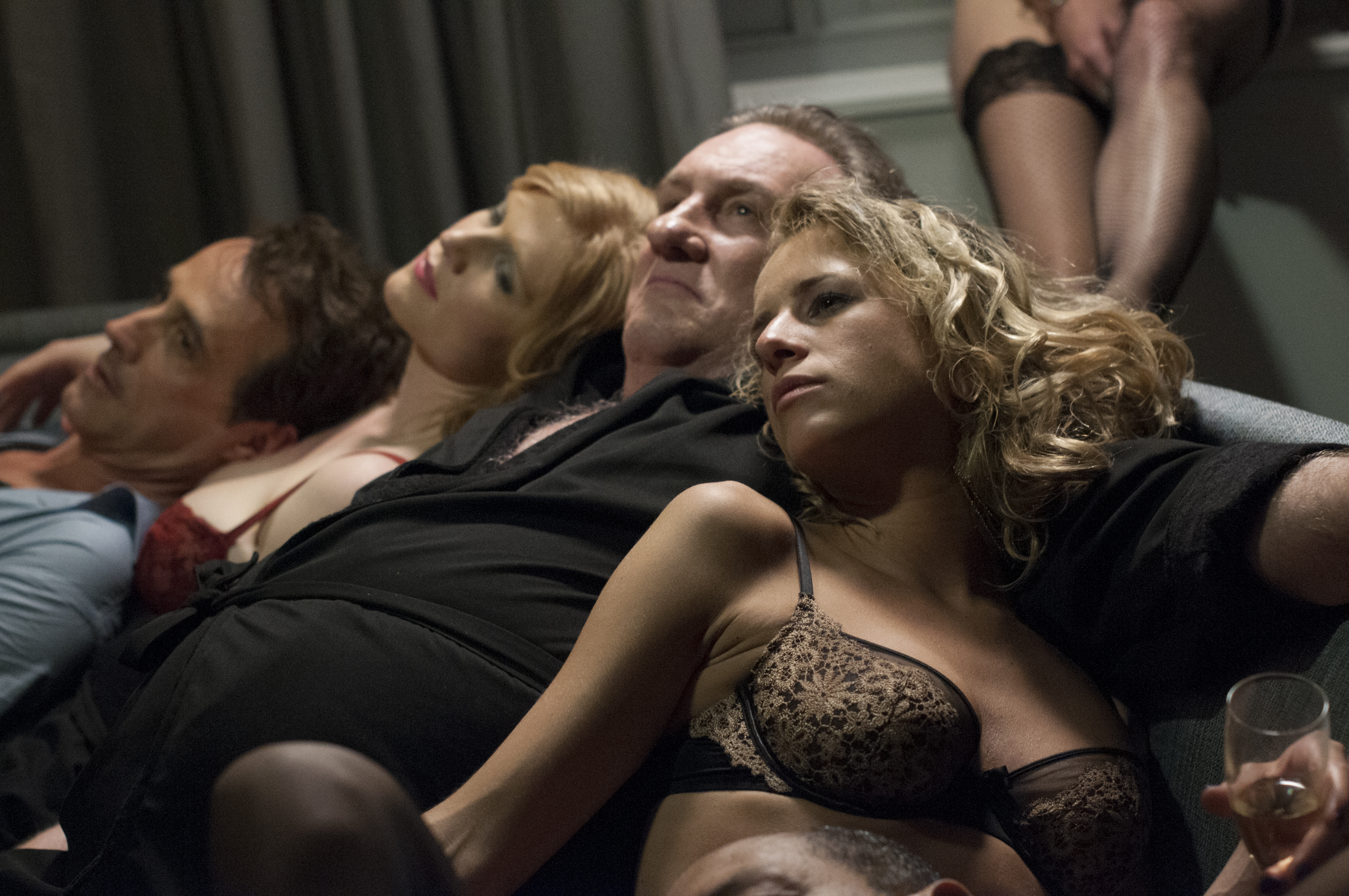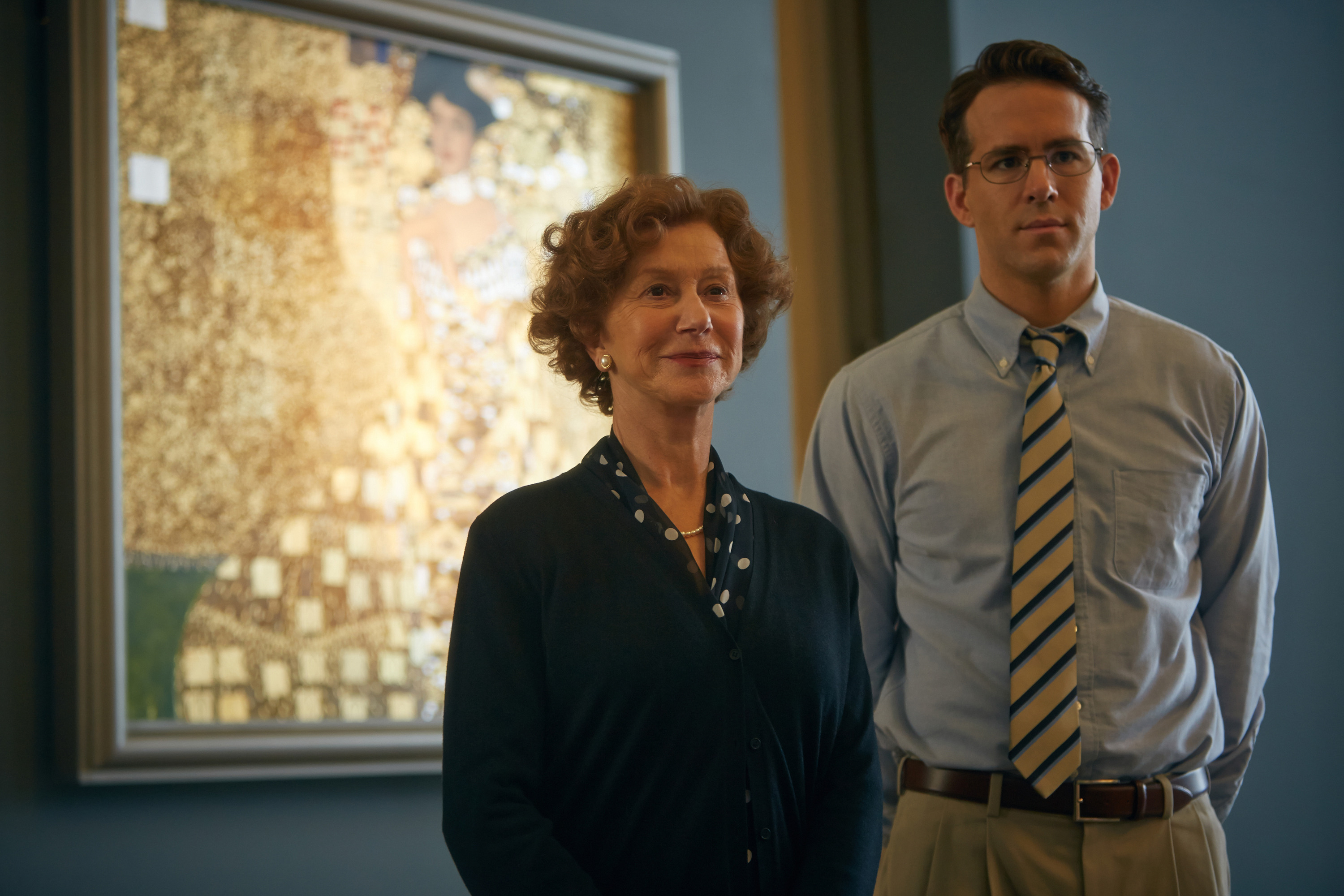Opening ThisWeek
Danny Collins
Opens Fri., April 3 at Meridian and other theaters. Rated R. 106 minutes.
“The following is kind of based on a true story a little bit.” There is a germ of truth to the opening disclaimer to this simultaneously hackneyed and likable rock-’n’-roll redemption tale. There really was a guy who, 40 years after the fact, discovered that John Lennon had written him a letter telling him to stay true to his art. Danny Collins simply replaces English folk singer Steve Tilston, who never found fame or riches but did remain true to the music, with a fictional American folk-rock sellout with plenty of regrets.
Al Pacino plays Danny as a music celebrity living high on his legacy, doing what looks like a lounge-act version of Mick Jagger on the casino circuit. He’s on showbiz autopilot, performing his greatest hits for the AARP demo with a voice like gravel, numbing the monotony with lines of blow and fifths of booze. The belated arrival of the Lennon letter doesn’t ring true as an existential crisis, but it does get the film out of the tired parody of L.A. rock-star decadence (mansion, Mercedes, young bimbo girlfriend) and into a sleepy New Jersey Hilton. From there, he hopes to finally connect with his neglected son Tom (Bobby Cannavale), born from a backstage hookup.
Like Danny, Pacino has also been a showman verging on—if not spilling over into—self-parody in recent decades, but he’s been on his own career-redemption tour of late. He turns Danny’s showmanship into a character trait, a reflexive instinct to connect with and charm everyone he meets, whether a sold-out concert hall or a gobsmacked parking valet. Even in a momentary bit of banter, Pacino makes that moment feel genuine.
Dan Fogelman, a veteran screenwriter making his directorial debut, actually has better instincts as a director than as a writer. It’s hard to get worked up over the emotional journey of a spoiled celeb who’s milked a bubblegum pop anthem into a fortune. What exactly happened to the earnest young folk singer of the prologue? We never learn. Yet such questions fade as Danny becomes part of Tom’s family. Pacino’s chemistry with Cannavale and Annette Bening (as his not-quite-but-getting-closer-to-age-appropriate love interest) overrides the plot contrivances, and he communicates more about his character by just sitting silently next to Cannavale than any long speeches could. It doesn’t make you forget the predictability of the redemption checklist here, but it makes the trip worth taking. SEAN AXMAKER
Effie Gray
Opens Fri., April 3 at Sundance Cinemas. Rated PG-13. 108 minutes.
It’s no coincidence that Dakota Fanning’s Euphemia (nicknamed “Effie”) looks like she stepped out of a pre-Raphaelite painting. Within the first few minutes of Effie Gray, she lives out her storybook fantasy and becomes the teenage bride of John Ruskin (Greg Wise), the 19th-century art critic who championed the upstart painters of the pre-Raphaelite movement. (He also praised J.M.W. Turner, earning the critic a small, lisping appearance in Mr. Turner.) John is serious, cultured, talented, and passionate in his love of art. A life with him will sweep Effie out of rural Scotland and into the center of London’s cultural elite—or so naive Effie believes. John meanwhile appears to view her as a lovely social prop for his budding career. He quite literally flees from any physical or emotional engagement with his wife. Did I mention he still lives with his parents (Julie Walters and David Suchet), who have spent their lives planning his career? The critic who argues that art should reveal truth is content to live a lie so long as appearances are maintained.
Appearances are everything in Effie Gray, a film that pushes tasteful restraint to extremes. Screenwriter Emma Thompson (Wise’s wife), who also plays Effie’s only London ally, offers a portrait of silent female suffering. Effie expresses herself mainly with furtive glances and longing looks. Director Richard Laxton, a British TV veteran, shoots it all like a series of still lifes with the characters trapped in their frames. When the young painter Everett Millais (Tom Sturridge), working on a portrait of Ruskin, leaves his face blank in the center of a wild natural backdrop, it’s hard to miss the suggestion of a man disconnected from the world. And if the resigned, exhausted misery of Effie’s pale face isn’t clear enough, Laxton cuts to the drowned maiden in Millais’ masterpiece Ophelia.
All those oppressive social codes Thompson wove so elegantly through Sense and Sensibility become the entire film here, and it shortchanges Effie. We get hints of a lively intelligence and curiosity, but Fanning isn’t given much opportunity to show us who Effie is, or could be, if unleashed from this smothering prison. Laxton is just as guilty of turning Effie into a bloodless symbol as Ruskin and his controlling parents. Effie Gray is lovely to look at, but never gives us a hint of life outside of those carefully composed frames. SEAN AXMAKER
P3 Hearts
Opens Fri., April 3 Seven Gables. Rated PG-13. 106 minutes.
The missed rendezvous: such a potent storytelling device, such a tantalizing chance to imagine what might have been if only Character A had been on time or Character B had waited another five minutes. Romeo and Juliet has a whopper along these lines, and the device works even when not depicted—like between the action of Before Sunrise and Before Sunset, for instance. One of my favorites is in Jules and Jim, in which a missed assignation is a brief plot beat, a mysterious “what-if” in the course of the great aching journey of Francois Truffaut’s classic. I wonder whether director Benoit Jacquot (A Single Girl) might have been thinking of that moment in Jules and Jim with his latest film, 3 Hearts. Here a missed connection is central to the passionate tale we’re watching; its ripples keep expanding through the rest of the movie.
A tax accountant, Marc (Belgian everyman Benoit Poelvoord), shares a single enchanted evening with Sylvie (Charlotte Gainsbourg), after failing to catch the last train back to Paris. They agree to meet in Paris in a week; when they miss connections, they don’t know how to find each other. It then happens—with fairy-tale logic—that Sylvie goes back to her bewildered boyfriend and moves to America, while Marc meets Sophie (Chiara Mastroianni) and falls for her before he realizes she’s Sylvie’s sister. The whole thing hinges on chance meetings and charged objects—a cigarette lighter functions like a magic amulet, and also ties in to Marc’s serious heart problems. I liked the story’s reliance on such ancient storytelling tricks—a break from the dull naturalism of most current drama.
Jacquot is something of a stealth director, a quiet analyst of human behavior whose Farewell, My Queen (2012) garnered his first proper U.S. release in a few years. He knows how to stage important moments, from the first time Marc sets eyes on Sylvie in a nondescript small-town cafe to a fatal glance the two share across a kitchen table. The actors are locked in: It’s especially good to see Gainsbourg—having bravely surrendered herself to the brier patch of Lars von Trier’s recent movies—get to inhabit a rather more normal character in such a subtle way. The main cast is filled out by Catherine Deneuve (Mastroianni’s real-life mother), who gives a lesson about what a movie star can achieve with relatively brief screen time. Like Jules and Jim, this film might be mistaken for a romance rather than a tragedy. But it leaves no doubt that—in French movies, at least—love is a life-or-death matter. Robert Horton
Welcome to New York
Runs Fri., April 3–Thurs., APril 9 at Grand Illusion. Rated R. 108 minutes.
In the early minutes of Welcome to New York, Gerard Depardieu’s performance as a VIP called Devereaux appears designed to elicit a variety of animal comparisons: pig, bear, bull, rhinoceros. His character grunts and wheezes, an overgrown satyr whose sex addiction can’t be satisfied, regardless of how many prostitutes or innocent bystanders fall into his path. Say this for the well-traveled, enormous Depardieu: He’s the most interesting thing about this bizarre film, and he exposes his baser instincts (and his corpulent body) with fearless abandon.
The film is inspired by the story of Dominique Strauss-Kahn, a leading French politician and head of the International Monetary Fund, who was arrested in 2011 for an alleged sexual assault on a hotel maid in New York. Wild-man director Abel Ferrara (of Bad Lieutenant notoriety) uses the Strauss-Kahn case as a platform for a variety of subjects: the nature of addiction, the corruption of idealism, the power of money, the emptiness of America. (The movie begins with “America the Beautiful” and close-ups of dollars, a blunt and clumsy way into whatever this thing is supposed to be about.) There’s so much on the table that Ferrara seems to unable to choose from this menu of ideas, so greedy are his appetites. So scenes unfold in various tones: clinical sex in lavish hotel rooms; dreary police procedurals as Devereaux is arrested and booked; and long conversations between Devereaux and his extremely wealthy, extremely ambitious wife Simone (Jacqueline Bisset).
She’s arranged (or paid for) Devereaux to get off with house arrest while he goes through the legal system, in a Manhattan apartment renting for $60,000 a month. This is a rare opportunity for the bilingual Bisset (the film’s mostly in English, but with a good deal of French) at a complex role, so it’s good to see a historically under-challenged actress get this kind of chance. Unfortunately, although her dialogues with Depardieu hint at rich territory, they sound improvised and flabby. Much of the film plays like that: an extended, fairly repellent search for some kind of point. (When Depardieu finally gets a voiceover that sounds truly written, it gives the film a rare chance to hit some targets.) For the record, Ferrara is upset with this release of the movie, which has been cut and rearranged from the version that was screened at Cannes last year. He may yet have his day, but it’s hard to imagine the movie entirely making sense. Robert Horton
Woman in Gold
Opens Wed., April 1 at Pacific Place. (Expands to Guild 45th and other theaters Friday.) Rated PG-13. 110 minutes.
The last time Helen Mirren went up against the Nazis, in The Debt, it was really no contest. So you will not be surprised to learn that the Austrian art thieves of the Third Reich fare no better against her Holocaust refugee Maria Altmann. Woman in Gold takes its title from the alternate, Nazi-supplied moniker for Gustav Klimt’s 1907 Portrait of Adele Bloch-Bauer. Adele was Maria’s beloved aunt, and Maria became the plaintiff in a long-fought art-restitution case, begun in 1998, against the Austrian government. Now you can bet this film would not have been made had Maria lost that case, which bounced between Austrian tribunals (rigged, naturlich) and the U.S. Supreme Court. The movie’s postscript will refresh your memory of past newspaper headlines, but the chief pleasure to Woman in Gold lies in its complete absence of surprise.
First, the Vienna-by-way-of Echo Park accent: Mirren perfectly channels Dr. Ruth’s mixture of Continental severity and relaxed American vernacular. Upholding her formality has become a joke to Maria, too, after five decades running a L.A. clothing boutique. Then there’s her sidekick—Ryan Reynolds’ unseasoned young attorney Randy Schoenberg (forever judged against his genius forebear Arnold Schoenberg). Too often positioned as a leading man or superhero because of his jawline (e.g., Green Lantern), Reynolds is better as an insecure bumbler. His forever-darting eyes make me think of Stan Laurel: a man always on the verge of panic, hysteria, or locking himself in a bathroom stall to cry (as Randy actually does in this picture). And those pleated Dockers!
This odd couple is obviously going to prevail against the stubborn, post-Waldheim Austrian establishment. As Maria says, “If they admit to one thing, they have to admit to it all.” One small victory for the Jews will mean total defeat for the Austrians. (Though the five paintings stolen from the Bloch-Bauers would later be auctioned for the not-so-small sum of $330 million.) Were the writing better, this would’ve made a good courtroom procedural (Elizabeth McGovern and Jonathan Pryce show up as judges), but director Simon Curtis (My Week With Marilyn) instead chooses to add copious flashbacks to the Anschluss era and Maria’s narrow escape from the Nazis. So while this is a star vehicle that depends on Mirren’s reliably purring V-12 engine, two other actresses play Maria at different ages—depriving us of the regular pleasure of her smackdowns upon poor Randy.
In my favorite moment in this serviceable, satisfying film, Mirren disdainfully holds a donut on her upturned fingers while Reynolds navigates his battered Jetta along the freeway to yet another court date. Drive faster, she says impatiently, ze chocolate is melting. I smiled just a little bit more because Mirren recently said she wants to be in the next Fast and the Furious movie (if there is one). Drive faster is right. And let there be more Nazis for her to smite. BRIAN MILLER
E
film@seattleweekly.com








